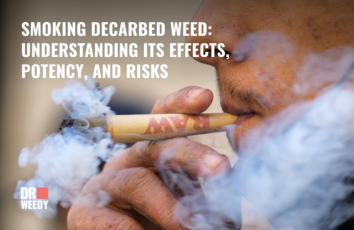Is Pre-Ground Weed Less Potent?
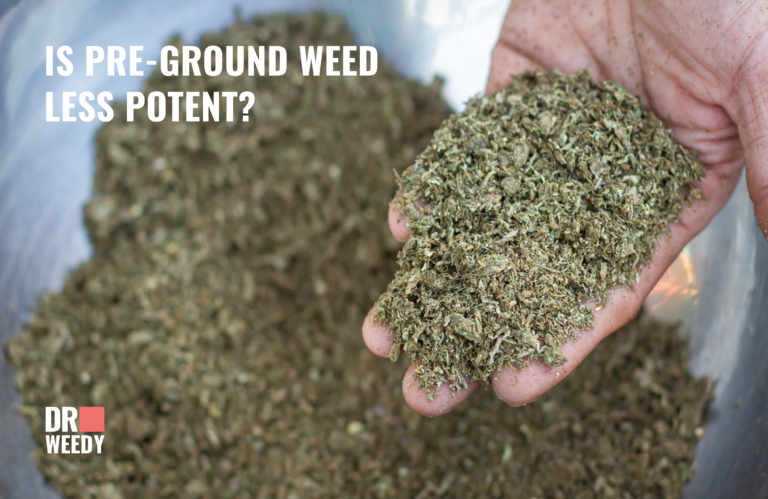
Pre ground weed has become increasingly popular for its convenience and ease of use. However, some cannabis enthusiasts argue that pre-grinding cannabis causes it to lose potency and degrade faster. In this article, we’ll explore whether pre-ground weed is actually less potent than whole bud cannabis.
What is Pre-Ground Flower?
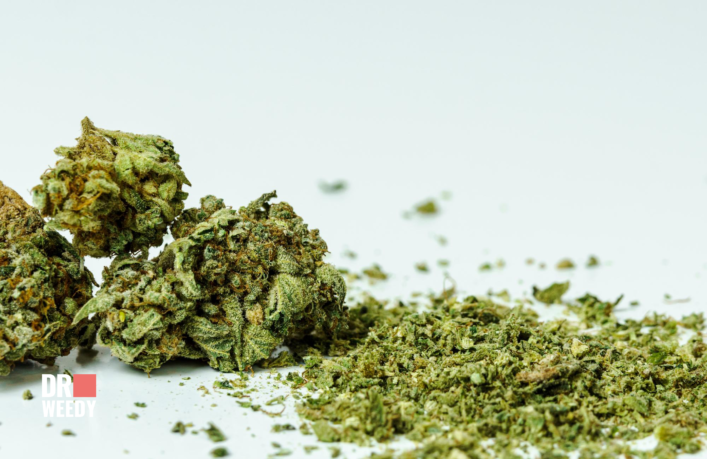
Pre-ground flower, often referred to as “shake,” is essentially cannabis buds that have been ground into smaller pieces, typically using a grinder. This process results in a product that’s ready for consumption or use in various applications.
Why People Prefer Pre-Ground Weed
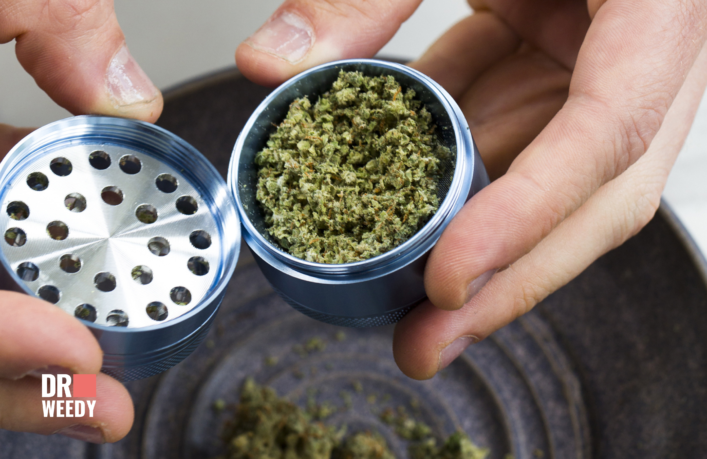
There are several reasons why pre-ground weed is an attractive option for many cannabis users:
Convenience
Pre-ground cannabis saves time and effort. You don’t need to own a grinder or spend time breaking down buds before smoking or cooking. Pre-ground weed is ready to use straight out of the package.
Consistent Texture
Pre-ground weed offers a uniform, fluffy texture perfect for loading into pipes, bowls, and vaporizers. You don’t have to worry about grinding too finely or coarsely. The consistency is always perfect.
Better for Portion Control
With pre-ground cannabis, it can be easier to measure out exact servings or doses using teaspoons or tablespoons. This allows for better control over how much you’re consuming.
Discreet and Portable
Carrying around whole buds can be risky and inconvenient. Pre-ground weed is more discreet and pocket-friendly, making it ideal for on-the-go use. The packaging also helps contain smell.
Cost-Effectiveness
Pre-ground cannabis is often more affordable than whole buds, making it an attractive option for budget-conscious users.
Enhanced Flavor for Cooking
When you’re using cannabis in cooking or baking, the consistent texture of pre-ground weed can be advantageous. It disperses more evenly throughout your recipe, potentially leading to a better flavor profile.
Reduced Waste
With pre-ground weed, you won’t end up with crumbs and remnants as you might when grinding whole buds. This can mean less wasted cannabis.
Consistent Results
Pre-ground weed offers predictable results because you don’t need to worry about variations in grind size, which can affect the potency of your experience.
Why Pre-Ground Weed May Lose Potency
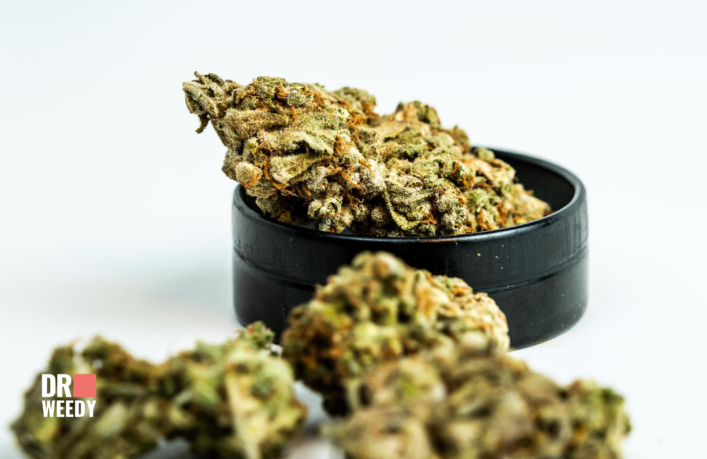
Despite the advantages, there are some potential downsides to pre-ground cannabis in terms of potency:
Increased Surface Area
When cannabis is ground up, it exposes significantly more surface area. This makes it more vulnerable to degradation from oxygen, light, heat, and moisture. Whole buds have more protection.
Faster Oxidation
Exposure to oxygen causes the oxidation and breakdown of THC, terpenes, and other cannabinoids over time. Pre-ground weed oxidizes much faster than intact buds.
Accelerated Decarboxylation
Grinding cannabis may accelerate decarboxylation, which converts non-intoxicating THCA into intoxicating THC. This can degrade and transform compounds prior to use.
Loss of Terpenes
Terpenes are delicate aromatic compounds that influence the effects and flavor of cannabis. As pre-ground weed sits, terpenes can evaporate and dissipate more quickly.
Contamination Risk
Pre-ground weed has more surface area exposed during packaging and handling, increasing the risks of contaminants being introduced compared to intact buds.
Research on Potency Loss
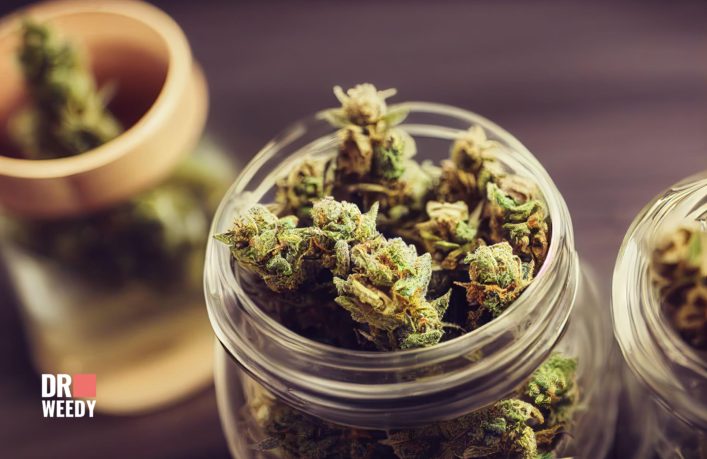
The preservation of THC (tetrahydrocannabinol) potency is influenced by several factors, particularly storage conditions. Below are the key factors and how they affect THC stability:
- Temperature: It’s the most crucial factor. Lower temperatures can significantly slow down the degradation process. Storage at 4°C (39.2°F) has shown lesser variability in THC and CBN content over time. However, high temperatures, like 30°C (86°F), lead to significant decreases in THC content. THC degrades notably at even higher temperatures of 37°C (98.6°F) and 50°C (122°F) (1).
- Time: The duration of storage directly impacts the potency of THC. In the first 100 days, THC degradation can be around 13-11% under various conditions, and almost 100% degradation may occur over four years, with the degradation following a pattern that can be described by first-order kinetics.
- Light and Air Exposure: To light and air can accelerate the degradation of THC into CBN, further reducing its potency (2).
- Humidity: The level of moisture can also affect THC, as too much humidity can promote mold growth, while too little can dry out the cannabis and cause the trichomes to become brittle and break off.
- Container Material: The type of material used to store cannabis can also affect THC potency. Materials that don’t allow light or air to penetrate are ideal for preserving THC content.
Maximizing Freshness and Potency
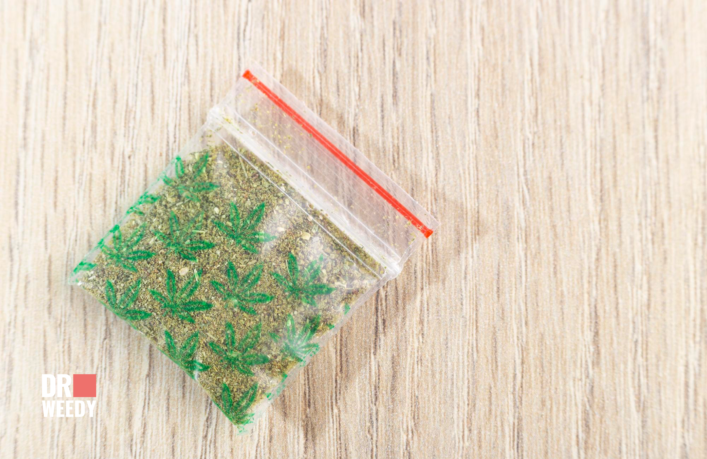
If enjoying pre-ground cannabis, there are some steps you can take to help preserve potency:
- Opt for nitrogen-flushed packaging to limit oxidation.
- Store the pre-ground marijuana in a cool place, ideally at or below 4°C (39.2°F) to minimize THC degradation.
- Avoid storing it at room temperature or higher, as temperatures like 30°C (86°F) or above can significantly reduce THC levels.
- Buy only in small quantities that will be used up quickly.
- Request packaging dates and consume pre-ground product soon after purchase.
- Inspect for signs of moisture, mold, and degradation.
While pre-ground weed may lose some potency and terpenes over time compared to whole buds, carefully packaged and stored product can still offer an exceptionally convenient cannabis experience. As with all cannabis products, freshness is key.
Finding the Best Pre-Ground Cannabis
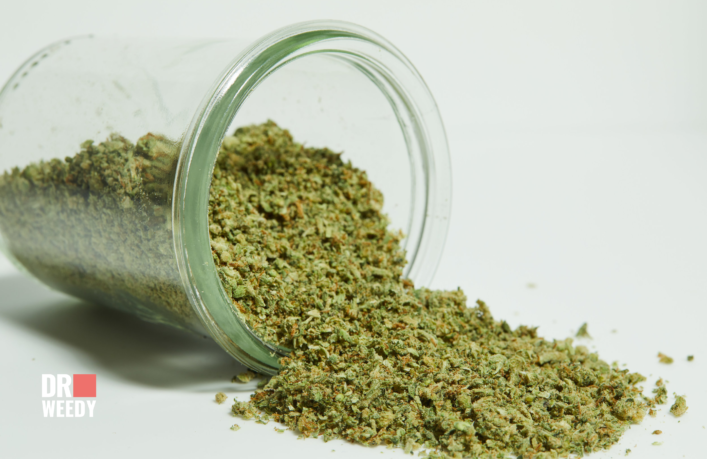
With the rising popularity of pre-ground cannabis, more brands and dispensaries are offering pre-packaged options. Here are some tips for finding high-quality pre-ground weed:
- Search for nitrogen-flushed packaging to limit oxidation. Mylar bags with one-way valve seals work well.
- Look for reputable, licensed producers who lab test for potency and purity. Avoid untested cannabis.
- Check packaging dates and consume recently ground product within 4 weeks.
- Inspect pre-ground weed visually and avoid any with visible mold, mildew or moisture.
- Opt for whole buds over shake or trimmings which degrade faster when ground.
- Consider hybrid strains over sativas or indicas, as they may retain potency longer.
- For vaping, choose finer grinds which expose more surface area. For smoking, coarser grinds work better.
While whole buds generally maintain maximum freshness, high-quality pre-ground cannabis can still provide an enjoyable experience and notable convenience. When shopping, prioritize recent packaging dates, reputable sources, and proper storage.
Conclusion: To Grind or Not to Grind?
Pre-ground cannabis offers undeniable advantages in terms of convenience and ease of use. However, the increased exposure causes pre-ground weed to potentially degrade and lose potency faster than intact buds. With careful selection of fresh products and proper storage conditions, pre-ground cannabis can still deliver a quality experience. But for the utmost potency and terpene preservation, grinding whole buds right before use is ideal. Ultimately, choosing between whole buds and pre-ground weed comes down to individual priorities and preferences around convenience, shelf life, and budget.
Sources:
- Repka, M. A., ElSohly, M. A., Munjal, M., & Ross, S. A. (2006). Temperature stability and bioadhesive properties of delta9-tetrahydrocannabinol incorporated hydroxypropylcellulose polymer matrix systems. Drug development and industrial pharmacy, 32(1), 21–32. https://doi.org/10.1080/03639040500387914
- Fairbairn, J. W., Liebmann, J. A., & Rowan, M. G. (1976). The stability of cannabis and its preparations on storage. The Journal of pharmacy and pharmacology, 28(1), 1–7. https://doi.org/10.1111/j.2042-7158.1976.tb04014.x






















